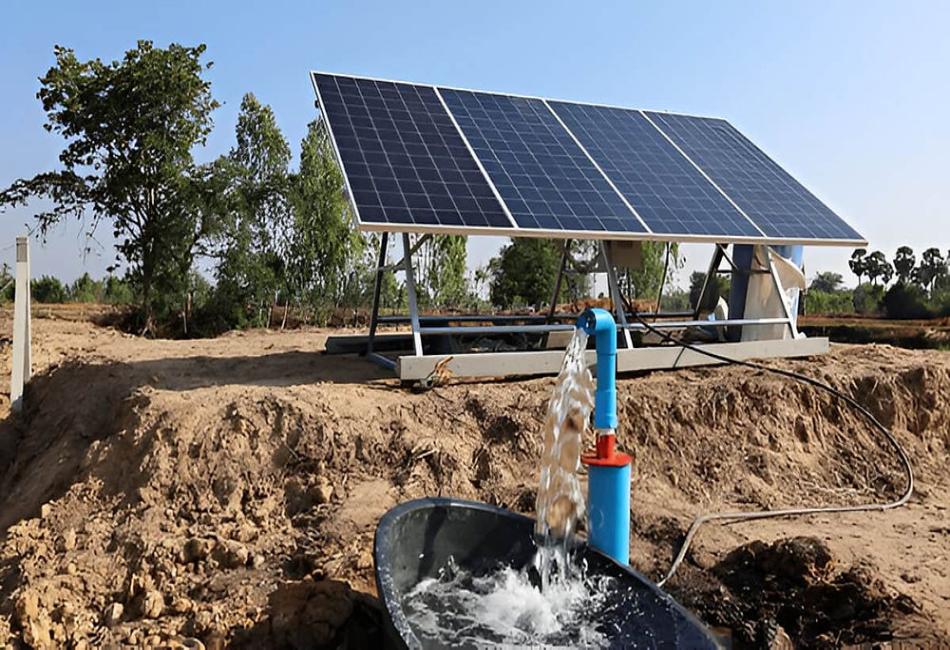Harnessing the Sun: Innovations in Solar Powered Water Pumps
The quest for sustainable and eco-friendly solutions has given rise to various technological advancements across multiple industries. Among these, the innovation of solar pumping technology stands out as a transformative development, especially in the agricultural and remote community water supply sectors. The solar powered water pump is at the forefront of this revolution, offering a range of benefits over conventional pumping systems.
The Rise of Solar Pumping Technology
The adoption of solar powered water pumps has seen considerable growth in recent years. Solar pumps harness the sun’s abundant energy to operate, thus eliminating the reliance on traditional electricity or fuel. This not only reduces operating costs but also decreases the environmental impact, making it an attractive option for both developed and developing regions.
Solar pumping systems are particularly valuable where grid electricity is unreliable or unavailable. Their ability to draw water from wells, rivers, and lakes using solar energy makes them a vital component in agricultural irrigation, livestock watering, and providing potable water to communities.
Design and Operation of Solar Water Pumps
The design of a typical solar powered water pump includes photovoltaic panels, a controller, and a pump itself. The solar panels capture sunlight and convert it into electrical power, which is then regulated by the controller to ensure a steady operation of the pump irrespective of the varying solar intensity.
Modern solar pumps are incredibly versatile and come in different sizes and capacities to match specific needs. Their efficiency lies in the direct conversion of solar energy into mechanical power, largely bypassing the need for batteries, which can be an expensive and high-maintenance energy storage option.
Advantages of Solar Water Pumps
The benefits of solar pumping technology are manifold. Apart from being environmentally friendly, solar pumps have virtually no operating costs once installed. They require minimal maintenance compared to diesel or petrol pumps, and the absence of fuel logistics offers an uninterrupted water supply even in remote locations.
Solar water pumps are also modular by design. They can be easily scaled according to the volume of water required or the intensity of sunlight available, providing an adaptable solution for various needs. Moreover, these systems are robust and durable, often designed to withstand harsh environmental conditions.
Innovations Enhancing Solar Pump Efficiency
Recent innovations in solar water pump technology have focused on increasing efficiency and reducing costs. Improvements in solar panel technology with higher conversion rates, more efficient motor designs, and advancements in pump materials have collectively boosted the performance of solar pumps.
Smart technology integration has allowed for the remote monitoring and control of solar pumps through smartphones and computers. This enables users to optimise their water usage and monitor system health, ensuring maximum efficiency and longevity of the equipment.
Innovation has also been directed towards making solar pumps accessible to smaller scale users. Micro-credit and pay-as-you-go models have emerged, empowering individual farmers and small communities to invest in solar pumping technology with manageable financial arrangements.
Global Impact of Solar Pumping
In developing countries, the impact of solar water pumps is noteworthy. By providing a reliable water source, these pumps play a crucial role in improving agricultural yield and thus the livelihood of farmers. Access to water also has profound implications for health and sanitation in these regions.
On a broader scale, the shift towards solar powered systems helps reduce the carbon footprint associated with water extraction and supply. As countries aim to meet their sustainable development goals, solar pumping technology becomes an increasingly essential component of their strategies.
Challenges and the Road Ahead
Despite the clear benefits, challenges remain in the widespread adoption of solar powered water pumps. Initial investment costs, although decreasing, can be a barrier for many potential users. Furthermore, the lack of awareness and technical expertise in some regions hampers adoption rates.
The future of solar pumping technology, however, looks bright. Continual advancements in efficiency, coupled with falling costs and increasing environmental awareness, suggest a growing trend towards solar pump usage. Support from governments and international bodies in the form of subsidies and education is likely to further boost this technology’s prevalence.
Conclusion
The innovation in solar pumping technology, particularly the solar powered water pump, represents a paradigm shift in how communities around the world manage water resources. These systems not only provide a sustainable solution but also act as a catalyst for social and economic development, especially in areas most affected by water scarcity and the high cost of traditional energy sources.
As the global community continues to seek sustainable and cost-effective solutions to water accessibility, solar powered water pumps stand out as a beacon of hope. Their ability to harness the limitless power of the sun offers a practical and environmentally responsible answer to one of humanity’s most pressing needs: access to clean water.







